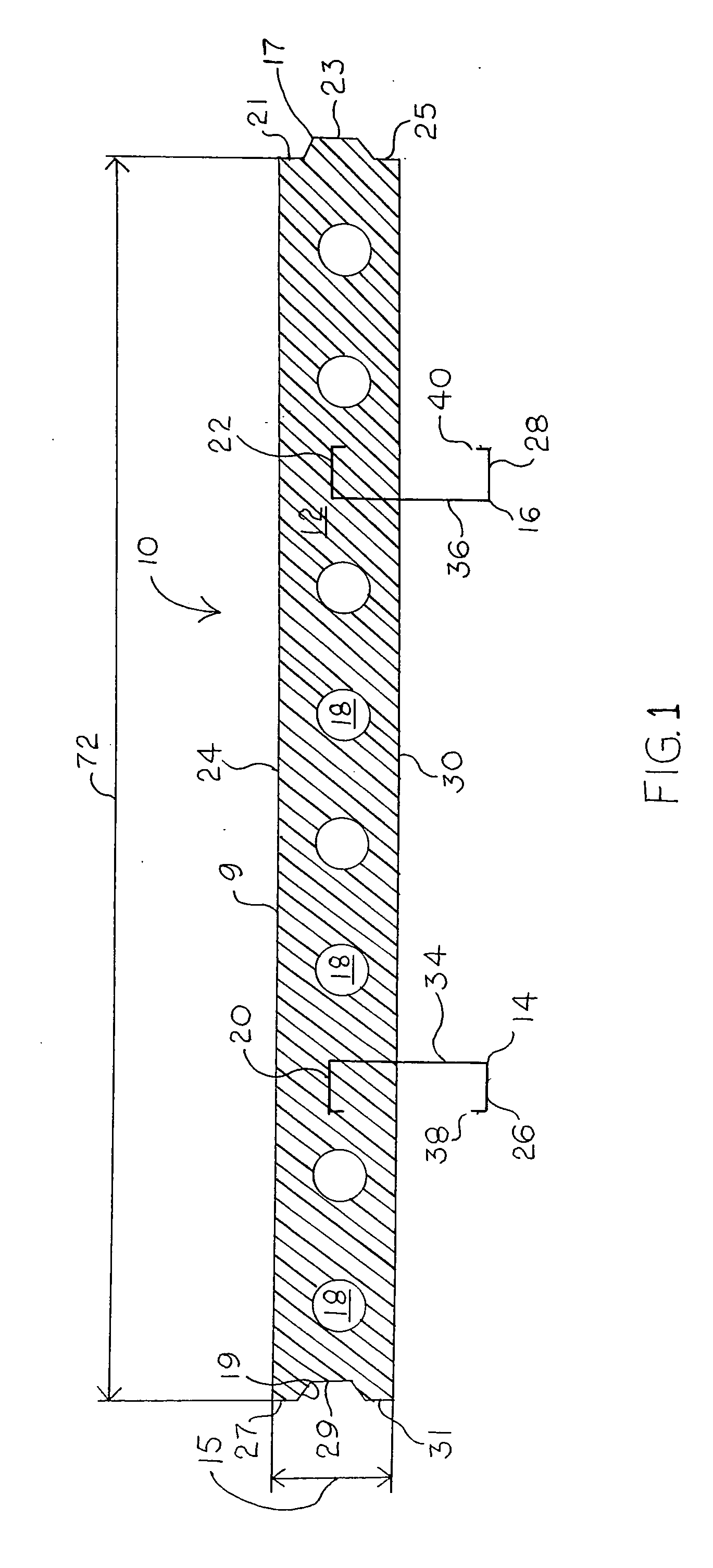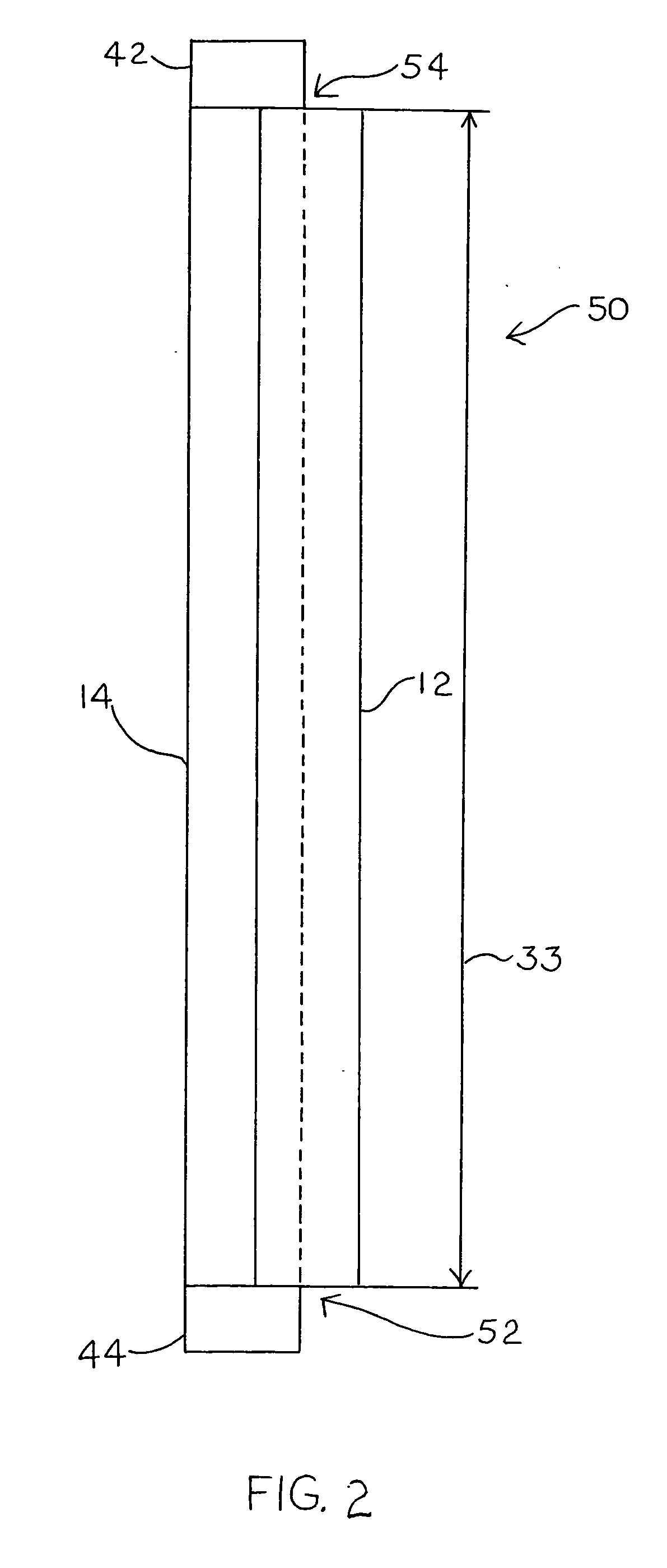Composite pre-formed construction articles
a technology of pre-formed construction and construction articles, applied in the field of pre-formed building and construction panels, can solve the problems of insufficient capacity of construction elements made of expanded plastics to securely hold the outer covering layer, flow and burn,
- Summary
- Abstract
- Description
- Claims
- Application Information
AI Technical Summary
Benefits of technology
Problems solved by technology
Method used
Image
Examples
Embodiment Construction
[0086] For the purpose of the description hereinafter, the terms “upper,”“lower,”“inner”, “outer”, “right,”“left,”“vertical,”“horizontal,”“top,”“bottom,” and derivatives thereof, shall relate to the invention as oriented in the drawing Figures. However, it is to be understood that the invention may assume alternate variations and step sequences except where expressly specified to the contrary. It is also to be understood that the specific devices and processes, illustrated in the attached drawings and described in the following specification, is an exemplary embodiment of the present invention. Hence, specific dimensions and other physical characteristics related to the embodiment disclosed herein are not to be considered as limiting the invention. In describing the embodiments of the present invention, reference will be made herein to the drawings in which like numerals refer to like features of the invention.
[0087] Other than where otherwise indicated, all numbers or expressions ...
PUM
| Property | Measurement | Unit |
|---|---|---|
| Time | aaaaa | aaaaa |
| Thickness | aaaaa | aaaaa |
| Thickness | aaaaa | aaaaa |
Abstract
Description
Claims
Application Information
 Login to View More
Login to View More - R&D
- Intellectual Property
- Life Sciences
- Materials
- Tech Scout
- Unparalleled Data Quality
- Higher Quality Content
- 60% Fewer Hallucinations
Browse by: Latest US Patents, China's latest patents, Technical Efficacy Thesaurus, Application Domain, Technology Topic, Popular Technical Reports.
© 2025 PatSnap. All rights reserved.Legal|Privacy policy|Modern Slavery Act Transparency Statement|Sitemap|About US| Contact US: help@patsnap.com



